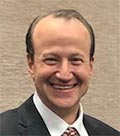Legal UpdateFebruary 2022
Is your ED ready for the new CMS billing rules?Did you know that when a physician assistant or nurse practitioner (collectively called by CMS, non-physician practitioners (NPP’s)) sees a patient independently in the ED, they (or the group) is only entitled to 85% of the reimbursement of a physician performing exactly the same task? Do you know why this is the case? Neither do I! More importantly, do you know what distinguishes full (100%) reimbursement vs. partial (85%) reimbursement when a physician and an NPP co-manage a patient? Read on and you will find out… In July of 2021 the Centers for Medicare and Medicaid Services (CMS) released its highly anticipated proposed rule for the upcoming 2022 Medicare Physician Fee Schedule (MPFS). The proposed rule will update and clarify how CMS will pay for “split” (i.e., co-managed) evaluation and management (E/M) visits provided by a physician and NPP’s. Since most private health insurers follow CMS’s lead with billing standards, the issue becomes relevant to those of us who take care of CMS patients (Medicare/Medicaid) as well as private pay patients. Under the current Medicare/Medicaid, and most private insurance payment systems, an NPP is able to bill at the full (100%) reimbursement rate (of a co-managed patient) if the co-managing physician performs at least one aspect of the care (i.e., history, physical exam, medical decision making, etc.). Alternatively, if the NPP performs their services completely independently, they are only permitted to bill at 85% of the full (physician) reimbursement rate. CMS requires the ED physician to be physically present in the office/institution/hospital to render assistance if necessary, but does not have to be in the patient’s treatment room while the emergency services are provided by the NPP. Additionally, the NPP and the ED doc must be working for the same employer to recoup 100% reimbursement for the NPP’s services. Meaning, if the ED doc is contracted by a group and the NPP is employed by the facility or other entity, there can only be an 85% reimbursement expected. Prior to the new law taking place, there was so much ambiguity as to what qualified for full reimbursement, that many ED groups and organizations modeled their patient interactions in a hub and spoke fashion. In other words, there was/is a central physician hub “supervising” multiple NPP spokes. Whether any actual “supervision” takes place...well, like Forrest Gump says; “I don’t know about all that.” CMS, and other private payers have certainly noted the games, shenanigans, and dare I say, fraud, that has transpired with the hub and spoke model described above. The strong appearance is that the physician is only present to ensure the extra 15% reimbursement, but rarely provides any legitimate supervision to the actual practice of the NPP. How many times have you signed an NPP’s chart without ever seeing the patient? Do you know if your group charged the 85% rate or the 100% rate for your signature? Are you concerned how this may appear to the authorities? Me too! Beginning January 1, 2022, CMS will base its reimbursement (85% vs. 100%) on which practitioner provided a “substantive portion” of the shared/split encounter. For the next 1 year (1/1/2022 – 12/31/2022) the physician must personally perform any one or all of the history, physical exam, or medical decision making in its entirety, or the physician must spend more than 50% of the total time allocated to caring for the patient to receive the full 100% reimbursement. This may include direct patient care or non-bedside care (reviewing labs, speaking with consultants, etc.). A similar time-based methodology will be used when determining payment for critical care services (i.e., the physician must perform more than 50% of the critical care services to receive the full critical care reimbursement). Coming January 1, 2023, the substantive portion will no longer be predicated on any of the E/M elements. The transition in 2023 will be to a strict time based methodology that will rely solely on which practitioner provided more than 50% of the visit encounter. As you can see, there will be multiple issues to address in the next year. First, will we continue to use NPP’s in the ED at all? Will the new rules help or hinder the forecasted ED doc oversupply issues? Will we just accept the status quo, and consequently the lower reimbursement, that will flow from the new rules? Will the new CMS rules assist in our endeavors to extricate our personal liability for patients independently managed by the NPP while we are on shift? Whatever transpires, change is sure to come and the new rules will encourage a rethinking of how we practice and bill for our services. Kenneth Alan Totz, DO, JD, FACEP No information within this publication should be construed as medical or legal advice. Independent medical and/or legal advice should be sought based on each individual’s particular circumstances. Resources:
|

